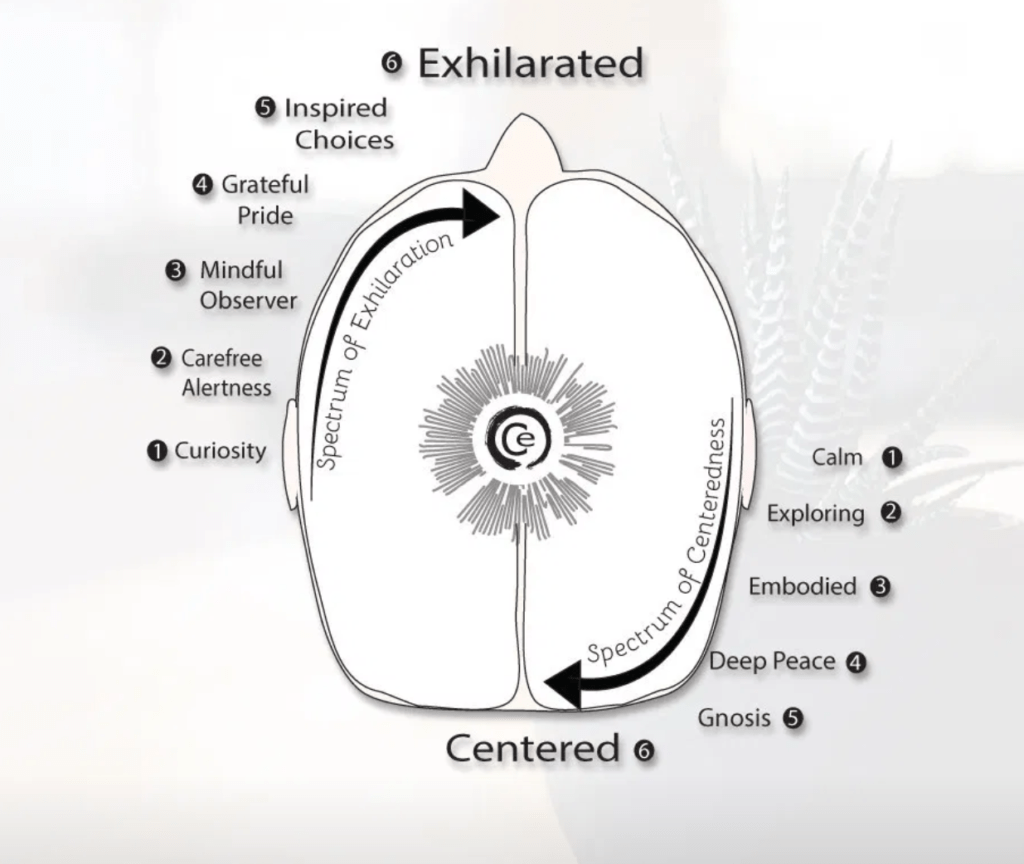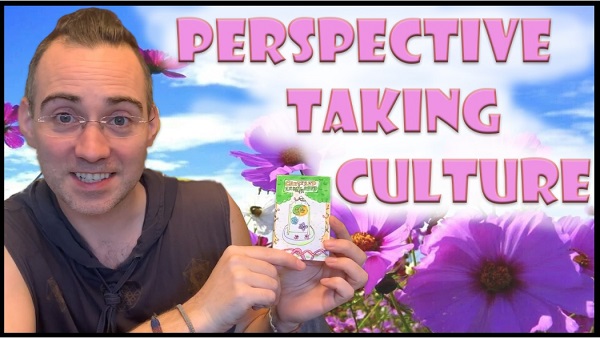By River Soulshine

How often in this society do we see an argument going back and forth, without either side truly hearing what each other is saying? Weekly? Perhaps daily? Certainly too often. Why is it that these conversations can seem like they’re going in circles, like a dog chasing its tail? To find out, you can either watch the video by clicking the picture above, or follow this two-step process to begin practicing perspective-taking culture right now:
Step 1: Notice Stress
So what can we do if we’re feeling stressed? Here’s a little trick I learned from alpha-theta training in neurofeedback: the brain doesn’t want to move to a relaxed whole-brain connection if the hemispheres don’t want to stabilize a connection over the parietal-ridge, and the parietal-ridge starts and ends just about where the ears are on the head. When we’re moving out of stress towards feeling calm, this process actually is coordinated in our brain near our right ear. Just the same, our left ear is where the process of becoming curious begins it’s coordination to bring in a more curious experience across the rest of the brain. So you see, if we can notice if we’re feeling calm and curious, it’s a simple trick to notice if the implicit and explicit memories of the left and right hemispheres are able to connect with each other, and in other words, if you’re capable of perspective taking.
By noticing whether each participant is feeling calm and curious you are noticing if the conversation is capable of perspective-taking.
 Passive Perspective-Taking Culture: Using Calm, Curious, and the TLLR Tool
Passive Perspective-Taking Culture: Using Calm, Curious, and the TLLR Tool
This is the start of perspective-taking culture: knowing what to look for. But then what do you do if someone’s too stressed to be calm and curious? Well, first remember: knowing is half the battle! There certainly are tools, such as the TLLR Tool, that can be used to defer the conversation to a later time, if possible, so that each participant can be in a better head space to have the chat. Noticing calm and curious and deferring stressful conversations using the TLLR Tool are both aspects of passive perspective-taking culture.
Active Perspective-Taking Culture: Supporting the Shining Eyes
 There are also tools, such as the Centered and Exhilarated Memory Share Tool, that teach how to proactively support someone feeling good about themselves, during the conversation, even if the topic is stressful. As this skill develops, we become better able to support the qualities that help people feel good about themselves as well as building trust in empowering each other. Another term for this skill that we like to use is: “supporting the shining eyes”. With passive perspective-taking culture, you’re only really using your skills when things become stressful. With active perspective-taking culture, you’re using your skills to help navigate difficult topics in a way that feels good and actively metabolizes the stress.
There are also tools, such as the Centered and Exhilarated Memory Share Tool, that teach how to proactively support someone feeling good about themselves, during the conversation, even if the topic is stressful. As this skill develops, we become better able to support the qualities that help people feel good about themselves as well as building trust in empowering each other. Another term for this skill that we like to use is: “supporting the shining eyes”. With passive perspective-taking culture, you’re only really using your skills when things become stressful. With active perspective-taking culture, you’re using your skills to help navigate difficult topics in a way that feels good and actively metabolizes the stress.Summary
The better we feel about ourselves, the more centered we become; the more embodied; the more in touch with our emotions. The better we feel, the more of our brain we’re able to access. And in general, the more of our parts we’re able to bring into the whole. There is no need to let difficult conversations feel draining. It’s springtime! We’ve just gone through a winter of rekindling our past memories and realizing where we might want to adventure next. But all changes take just a little bit of effort in order to reorient ourselves in relationship with the new universe we’re manifesting. This means there might be a few difficult conversations up ahead of us on the horizon. The key to re-aligning our place in this world in relation with others is to have successful conversations where we can be in harmony with each other’s feelings and world views. If you’re curious about building your practice of perspective-taking, check out this video I made, to help you take your practice further. In it, I outline a couple quick and easy things to strive for if you want each and every conversation to embody a culture of perspective-taking. I even include a link to the 1 page fold-able booklet so that you can print out your own copy and pass it on to your friends. I hope you enjoy the video and I hope you can get out there and enjoy the spring!
But why does our brain shut down our perspective-taking abilities when we’re feeling stress?
Well, think about it like this: Have you ever wanted to show someone something you were really excited about, but maybe they were really stressed out and you didn’t notice, so they raised their voice with you angrily and told you to go away? In these types of situations, they snapped at you because they were angry about something unrelated. But it still hurts doesn’t it? It can hurt even more when we’re feeling really good about ourselves because we are in a more vulnerable place when we’re in touch with our whole brain connection, including our emotions and the feelings in our body. In fact, the better we’re feeling, the wider our Mirror Neuron System (MNS) has opened up to pick up on the nuances and context of social relationships. The MNS is the system that evolved in us to achieve deeper levels of nourishment when our pack/group is feeling relaxed, or helps us to move to alertness more quickly when someone in our pack/group is feeling stressed. The MNS thinks it’s safe when we’re feeling good so it connects all of our parts into a coherent whole.
The more we open up in this way, the more we’re susceptible to picking up on the stress of others. Or maybe we’ve been having a bad day ourselves. We might be trying to not feel our own stress in our own body. If this is the case, we’re less likely to laugh at jokes or to join in when someone is having a good time. Somehow, subconsciously, a part of us knows that if we start having a good time we’re going to feel those emotions and all that stress in our body again and we don’t want to. So the first pillar of perspective-taking culture really comes down to giving that stress a good place to go.




